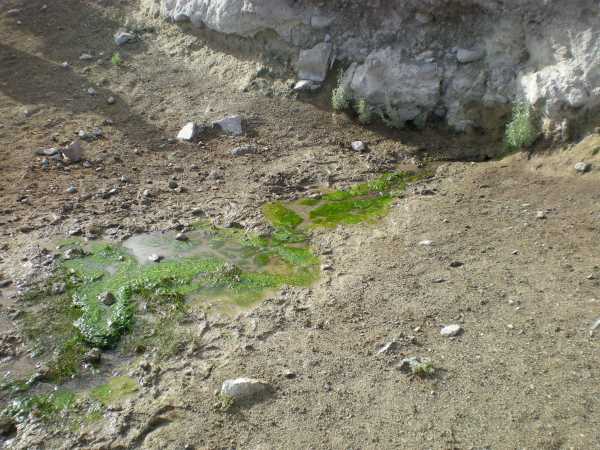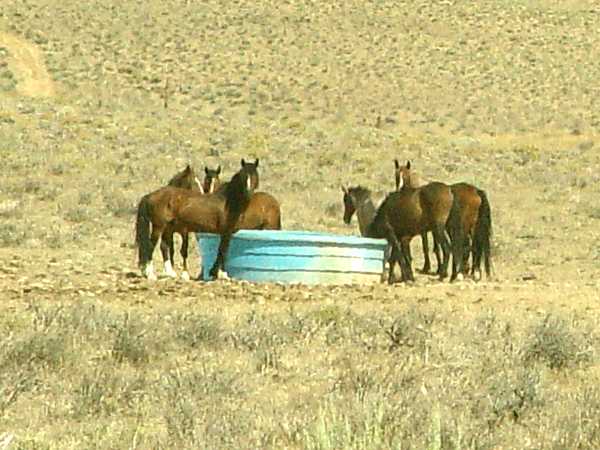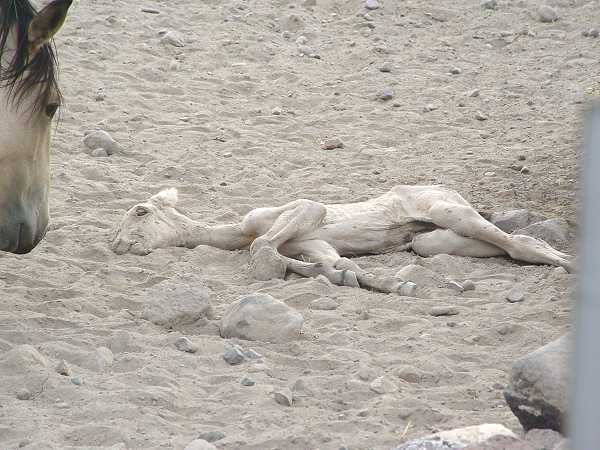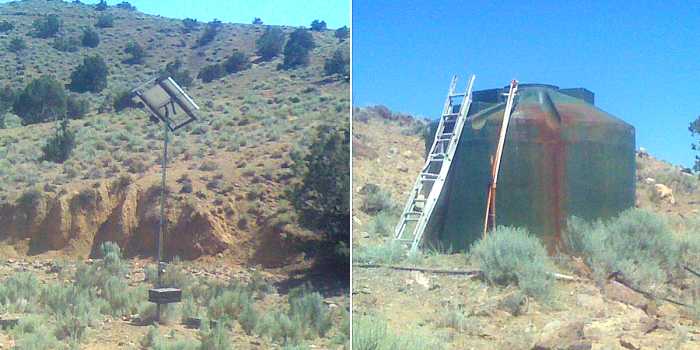Nevada is the most arid state in the union. Some areas receive three inches or less of rainfall per year. A modest shift in seasonal weather can wreak havoc on Nevada's man-altered ecosystem. Nevada also has diverse microclimates. One range may have normal rainfall and water while another nearby range may suffer severe drought.
A once flowing spring reduced to little more than a seep.

Ordinarily wild horses are a self-regulating species. If a particular range did not have enough water to support a large number of horses they would naturally disburse to other locations where water was present. However man has changed that process. Even in normal rainfall years human uses on both public and private ranges produce fluctuations in available resources. Water provided for seasonal livestock grazing can encourage a greater number of horses to inhabit a particular area. When the water is "turned off" at the end of grazing season it can sometimes leave a large number of horses scrambling for water. Horses will then tend to populate areas nearby where water still remains, creating a lot of grazing pressure there.
A band of thirsty horses waiting for a water drop.

Foals get crushed when horses crowd over dwindling water supplies.

During a dry season when livestock are removed early, diesel and electric wells are shut down and when natural water sources also decline, the situation can become even more serious. Accordingly we advocate development of alternate water resources such as solar wells that can provide service for wildlife when water resources for livestock resources are no longer operating.
A typical solar well. These wells don't generally produce high flows but they do provide year-round service

The solar well concept won't solve all of the wild horse water problems. Nevada is mostly high desert and it is also a water rights state. There are many ranges where the water is simply too far below ground for conventional solar wells provide the volume necessary to sustain a large number of horses. (The water produced must be enough for all the animals that come to drink. Otherwise no water will be left for the horses at the "back of the line" and they will suffer.) Furthermore those individuals who actually own the water rights have to agree to allow their water to be provided to wild horses and wildlife.
|




